From Wikipedia, the free encyclopedia
Blood and Sand may refer to:
- Sangre y arena, a 1908 novel by Vicente Blasco Ibáñez, which was the basis for four films:
- Blood and Sand (1916 film), directed by Ibáñez himself
- Blood and Sand (1922 film), starring Rudolph Valentino, Lila Lee, and Nita Naldi
- Blood and Sand (1941 film), directed by Rouben Mamoulian starring Tyrone Power, Linda Darnell, and Rita Hayworth
- Blood and Sand (1989 film), Spanish film starring Chris Rydell, Sharon Stone, and Ana Torrent
Blood and Sand (1916 Film)
From Wikipedia, the free encyclopedia
Blood and Sand (Spanish: Sangre y Arena) is a 1916 film based on the novel Sangre y Arena by Vicente Blasco Ibáñez. The film was co-directed by Blasco Ibáñez himself and Max André. It was produced by the Spanish–French label Prometheus Films, named after the Editorial Prometeo, Blasco Ibáñez’s publishing house, which backed the cost of the film.
It was the first time that the novelist assumed management tasks and production. Moreover, thanks to the success achieved in Spain, Sangre y Arena exerted a significant influence on the Spanish cinema in the immediate years, and stood at the origins and then used as appellant españolada genre. It was the only time that Blasco Ibáñez himself reflected in images the design of his own work.
It remains a tape from the Czech Film Archive, a version with 800 meters of length less than the original film. This version was restored by the Valencia Film Archive and Prague’s, with a changed ending, where the parallels between bullfighting and bandits are reinforced.
Restoration
The copy held by Valencia Film Archive was given by Dolores Nebot Sanchis in 1993. It was a film roll in nitrate support found in a state of decay that produced irreversible damage to the image, and contained about a sixth part of the full footage. From that footage, restored in 1993, 93 meters were saved.
In 1996, following a projection by the Spanish Film Archive of a series of films archived at the Czech Film Archive, the Valencia Film Archive contacted with Národní Filmový Archiv and got on loan their copy so they could complete the nitrate footage as close as possible to the original length.
That copy was repaired with nitrate material from diverse origin, with fingerprint and loss of emulsion problems. It was restored in the ISKRA lab and the security transfer used an optical printer with wet window.
From the Valencia Film Archive footage were extended some sequences that were shorter in the Czech copy. Also, some sequences were completed and others added, sequenced according to the order of the original novel.
Watch the 1916 movie
Blood and Sand (1922 Film)
| Blood and Sand | |
|---|---|
| |
| Directed by | Fred Niblo |
| Screenplay by | June Mathis |
| Based on | Sangre y arena 1908 novel by Vicente Blasco Ibanez Blood and Sand 1921 play by Thomas Cushing |
| Produced by | Fred Niblo (uncredited) Jesse L. Lasky |
| Starring | Rudolph Valentino Lila Lee Nita Naldi Rosa Rosanova Walter Long |
| Cinematography | Alvin Wyckoff |
| Edited by | Dorothy Arzner (uncredited) |
| Production company | Famous Players–LaskyParamount Pictures |
| Distributed by | Paramount Pictures |
| Release date | August 5, 1922 (United States) |
| Running time | 80 minutes 9 reels (8,110 feet or 2,471 meters) |
| Country | United States |
| Languages | Silent English intertitles |
| Box office | $1,250,000 (US/Canada) |

Blood and Sand is a 1922 American silent drama film produced by Paramount Pictures, directed by Fred Niblo and starring Rudolph Valentino, Lila Lee, and Nita Naldi. It was based on the 1909 Spanish novel Sangre y arena (Blood and Sand) by Vicente Blasco Ibáñez and the play version of the book by Thomas Cushing.
The film was produced by Famous Players-Lasky Corporation and Paramount Pictures, and distributed by Paramount. June Mathis, who has been credited as discovering Valentino, adapted the novel for the screen.
Dorothy Arzner worked as the film’s editor. Arnzer, who would later become one of the first female film directors, used stock footage of bullfights filmed in Madrid interspersed with close-ups of Valentino. Her work on the film helped to solidify her reputation of being a resourceful editor as her techniques also saved Paramount money. She would later say that working on the film was the “first waymark to my claim to a little recognition as an individual.”

In August 1922, writer Cal York of Photoplay commented on the actor’s appearance in the above film still: “…is Rodolph Valentino wearing a wig in ‘Blood and Sand,’ or did he permit his slick hair to be coiffed into the curly mop you see under this Spanish cap? Cheer up—it’s only temporary. Later on in the picture he looks more like Julio.” By “Julio”, York is referring to Valentino’s character in The Four Horsemen of the Apocalypse, who has slicked-back hair.
Blood and Sand premiered at the Rialto Theater in Los Angeles on August 22, 1922. The film was a box office hit and was one of the top-grossing films of 1922. The film, along with The Sheik and Four Horsemen of the Apocalypse (both 1921), helped to establish Valentino as a star and was one of the most successful films of his career. “In my judgement it is the best thing he has done,” said Mary Pickford of Valentino’s performance, “and one of Mr. Niblo’s finest pictures. It is one of the few pictures I have been able to sit through twice and enjoy the second time more than the first.”
An earlier version of Blood and Sand was released in 1916, and filmed by Blasco Ibáñez himself, with the help of Max André. This earlier version was restored in 1998 by the Filmoteca de la Generalitat Valenciana (Spain).
Blood and Sand has also been remade twice; a 1941 version was directed by Rouben Mamoulian and stars Tyrone Power, Linda Darnell, and Rita Hayworth. The 1989 Spanish remake was directed by Javier Elorrieta and stars Chris Rydell, Sharon Stone, and Ana Torrent.
The film gave its name to a popular Prohibition-era cocktail, the Blood and Sand.
Watch the Movie
Blood and Sand (1941 Film)
| Blood and Sand | |
|---|---|
| |
| Directed by | Rouben Mamoulian |
| Screenplay by | Jo Swerling |
| Based on | the novel by Vicente Blasco Ibanez |
| Produced by | Associate producer: Robert T. Kane Producer: Darryl F. Zanuck |
| Starring | Tyrone Power Linda Darnell Rita Hayworth Nazimova Anthony Quinn J. Carrol Naish Lynn Bari John Carradine Laird Cregar Monty Banks Vicente Gómez |
| Cinematography | Ernest Palmer, A.S.C. Ray Rennahan, A.S.C. |
| Edited by | Robert Bischoff |
| Music by | Alfred Newman Vicente Gómez (guitarist) |
| Color process | Technicolor |
| Production company | 20th Century Fox |
| Distributed by | 20th Century Fox |
| Release date | May 22, 1941 |
| Running time | 125 minutes |
| Country | United States |
| Language | English |
| Budget | $1,115,200 |
| Box office | $2,717,200 |
Blood and Sand is a 1941 American Technicolor film drama starring Tyrone Power, Linda Darnell, Rita Hayworth and Nazimova. Directed by Rouben Mamoulian, it was produced by 20th Century Fox and was based on the 1908 Spanish novel Blood and Sand (Sangre y arena) by Vicente Blasco Ibáñez. The supporting cast features Anthony Quinn, Lynn Bari, Laird Cregar, J. Carrol Naish, John Carradine and George Reeves. Rita Hayworth’s singing voice was dubbed by Gracilla Pirraga.
Other versions of Blood and Sand include a 1922 version produced by Paramount Pictures and starring Rudolph Valentino, a 1916 version filmed by Blasco Ibanez with the help of Max André, and a 1989 version starring Christopher Rydell and Sharon Stone.
Blood and Sand was the fourth and last film in which Tyrone Power and Linda Darnell worked together. The others were Day-Time Wife (1939), Brigham Young (1940) and The Mark of Zorro (1940).
Plot
As a child, Juan Gallardo wanted to be a bullfighter like his dead father. Before leaving Seville for Madrid to pursue his dream of success in the bullring, he promises his aristocratic child sweetheart Carmen Espinosa that he will return when he is a success and marry her. Ten years later, after achieving success as a matador, Juan returns to Seville. He uses his winnings to help his impoverished family and fulfills his promise to marry Carmen. His fame and wealth grow, and he becomes Spain’s most acclaimed matador. As critics heap praises upon Juan’s talent, he catches the eye of sultry socialite Doña Sol at one of his bullfights.

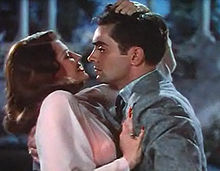
Hayworth and Power
Juan is blinded by the attention his fame has brought and Doña Sol finds it easy to lead him astray. He soon neglects his wife, family, and training in favor of her privileged, decadent lifestyle. As a result, his performance in the bullring suffers. Not only does he fall from position as the premier matador of Spain, but his extravagant lifestyle loses his savings, suppliers, and employees. His manager warns Juan that he is headed for destruction but Juan refuses his advice. With falling fame and finances, there comes rejection by everyone once important to him. Even Carmen leaves him, while Doña Sol moves on to new up-and-coming matador Manolo de Palma, one of Juan’s childhood friends.
After losing everything, a repentant Juan begs forgiveness and is taken back by Carmen. He promises her to leave bullfighting but wishes to have one final bullfight to prove he is still a great matador. His prayers for one last success, however, are not answered and, like his father before him, he is gored by the bull. Juan dies in the arms of Carmen as the crowd cheers Manolo’s victory over the bull. Manolo bows to the fickle crowd near the stain left in the sand by Juan’s blood.
Cast
By Trailer screenshot – Blood and Sand trailer, Public Domain, Link |
By Trailer screenshot – Blood and Sand trailer, Public Domain, Link |
By Trailer screenshot – Blood and Sand trailer, Public Domain, Link |
By Trailer screenshot – Blood and Sand trailer, Public Domain, Link |
By Trailer screenshot – Blood and Sand trailer, Public Domain, Link |
By Trailer screenshot – Blood and Sand trailer, Public Domain, Link |
By Trailer screenshot – Blood and Sand trailer, Public Domain, Link |
By Trailer screenshot – Blood and Sand trailer, Public Domain, Link |
By Trailer screenshot – Blood and Sand trailer, Public Domain, Link |
| Actor | Role |
|---|---|
| William Montague | Antonio López |
| Vicente Gómez | Guitarist |
| George Reeves | Captain Pierre Lauren |
| Pedro de Cordoba | Don José Álvarez |
| Fortunio Bonanova | Pedro Espinosa |
| Victor Kilian | Priest |
| Michael Morris | La Pulga |
| Charles Stevens | Pablo Gómez |
| Ann Todd | Carmen (as a child) |
| Cora Sue Collins | Encarnación (as a child) |
| Russell Hicks | Marquis |
| Maurice Cass | El Milquetoast |
| Rex Downing | Juan (as a child) |
| John Wallace | Francisco |
| Jacqueline Dalya | Gachi |
| Cullen Johnson | Manolo (as a child) |
| Larry Harris | Pablo (as a child) |
| Ted Frye | La Pulga (as a child) |
| Schuyler Standish | Nacional (as a child) |
Uncredited (in order of appearance)
| Fred Malatesta | waiter serving Natalio Curro |
| Michael Visaroff | patron at cantina |
| Rafael Alcayde | patron at cantina |
| Elena Verdugo | specialty dancer at cantina |
| Francis McDonald | Manolo’s friend |
| Esther Estrella | girl who gazes admiringly at Juan |
| Cecilia Callejo | girl who gazes admiringly at Juan |
| Barry Norton | guest at Doña Sol’s dinner and reception |
| Bess Flowers | guest at Doña Sol’s dinner and reception |
| Kay Linaker | guest at Doña Sol’s dinner and reception |
| Julian Rivero | spectator at bullfight |
| Gino Corrado | waiter who serves Juan at cantina |
Production
“Blood and Sand, more than anything else, is about color. Of all Mamolian’s films, it is the most painterly, the most pictorial.” —Film historian Marc Spergel in Reinventing Reality: The Art and Life of Rouben Mamoulian (1993).[7][8]
Over 30 actresses were considered for the role of Doña Sol, including Gene Tierney and Dorothy Lamour. After Carole Landis, Zanuck’s original choice, refused to dye her hair red for the role, Rita Hayworth was cast. Rouben Mamoulian’s sets were inspired by the works of painters El Greco, Goya and Velázquez. During shooting, he carried paint spray guns so he could alter the color of props at a moment’s notice. He also painted shadows onto walls rather than changing the lighting.
The film’s exterior long shots were filmed in Mexico City Plaza de Toros. The famous bullfighter Armillita instructed Power and other cast members and doubled as Power in some of the bullfighting sequences shot on location. Tailor Jose Dolores Perez copied two of Armillita’s elaborate matador suits for the film.
Oscar “Budd” Boetticher Jr. served as a technical advisor. This was his first film. He also worked with Power on bullfighting techniques and helped dance director Geneva Sawyer to choreograph the dance between Hayworth and Anthony Quinn.
Rita Hayworth’s singing voice was dubbed by Graciela Párraga.
Unlike most films at the time, Blood and Sand was not previewed, but premiered uncut at Grauman’s Chinese Theatre in May 1941.
A Lux Radio Theatre version of the story, starring Power and his then-wife Annabella as Carmen, was broadcast on October 20, 1941.
Reception
The film was a big hit and earned a profit of $662,500.
Variety praised the picture, adding: “Especially effective are the bullfight arena sequences…Power delivers a persuasive performance as Ibanez’s hero while Darnell is pretty and naive as the young wife. Hayworth is excellent as the vamp and catches major attention on a par with Nazimova, who gives a corking performance as Power’s mother.”
On the other hand, The New York Times‘ review (signed T.S.) was very negative: “For there is too little drama, too little blood and sand, in it. Instead the story constantly bogs down in the most atrocious romantic cliches… (There are) glimpses of a stunning romantic melodrama with somber overtones. But most of the essential cruelty of the theme is lost in pretty colors and rhetorical speeches…The better performances come in the lesser roles—Laird Cregar as an effeminate aficionado, J. Carrol Naish as a broken matador, John Carradine as a grumbling member of the quadrilla. For one enthralling moment Vicente Gómez, the musician, appears on the screen. If the film had only caught the barbaric pulse of Gómez’s incomparable fingers at the guitar, there would be good cause for cheers. Instead it has been content for the most part to posture beautifully…”.
Retrospective appraisal
Leonard Maltin gives the film three out of four stars, describing it as a “Pastel remake of Valentino’s silent film about naive bullfighter who ignores true love (Darnell) for temptress (Hayworth). Slow-paced romance uplifted by Nazimova’s knowing performance as Power’s mother; beautiful color production earned cinematographers Ernest Palmer and Ray Rennahan Oscars.”
On the influence of Spanish painters
After completing his musical High, Wide and Handsome (1937), Mamoulian traveled to Europe to view its art and architecture. While in Paris, he saw an El Greco exhibit which would inform his chapel sequence in Blood and Sand. Malmoulian, an amateur painter, reported in a June 1941 interview with American Cinematographer that his sequences in Blood and Sand had been explicitly styled after the Spanish masters, among them Murillo, Goya, Velazquez, and El Greco.
Take-offs
- In the same year, 1941, the Mexican comedian Cantinflas appeared in the Mexican comedy film Ni sangre ni arena (“Neither blood nor sand”) a deliberate parody of this picture.
- Inspired by Blood and Sand‘s popularity, The Three Stooges released a short titled “What’s the Matador?” with no story connection except bullfighting. It was filmed in August 1941, three months after Blood and Sand was released, but did not come out until April 1942.
- Fear and Sand, an Italian comedy film of 1948 starring Totò as a hapless bullfighter, plays only with the title.
Awards
The film won an Academy Award for Best Cinematography. It also was nominated for Best Art Direction (Richard Day, Joseph C. Wright and Thomas Little).
Watch the Trailer
Blood and Sand (1989 film)
| Blood and Sand | |
|---|---|
| |
| Directed by | Javier Elorrieta |
| Written by | Rafael Azcona Ricardo Franco Thomas A. Fucci |
| Based on | Sangre y arena 1908 novel by Vicente Blasco Ibanez |
| Produced by | José Frade |
| Starring | Christopher Rydell Sharon Stone Ana Torrent |
| Cinematography | Toño Ríos |
| Edited by | José Antonio Rojo |
| Music by | Jesús Gluck Paco de Lucía (uncredited) |
| Production company | José Frade Producciones Cinematográficas S.A. |
| Distributed by | 20th Century Fox |
| Release dates | September 22, 1989 (Portugal) September 28, 1989 (Spain) |
| Running time | 113 minutes |
| Countries | United States Spain |
| Language | English |
Blood and Sand (Spanish: Sangre y arena) is a 1989 Spanish drama film directed by Javier Elorrieta and starring Christopher Rydell, Sharon Stone, and Ana Torrent. It was loosely based on the novel Sangre y arena of Vicente Blasco Ibáñez, which had been adapted for the screen three times before, in 1916, 1922 and 1941.
Plot
The story revolves around the young and talented natural gifted Torero Juan Gallardo (Christopher Rydell). Juan wants to be popular in bullfighting. One night, Juan takes the cousin of his love Carmen (Ana Torrent) with him for a bullfighting competition. They successfully earn some level and skills in the arena, but something goes wrong. As the bull charges at Juan, his friend saves Gallardo at the cost of his own life.
Juan then leaves, and meets a beautiful rich woman named Doña Sol (Sharon Stone), the daughter of a wealthy landowner. Lady Doña Sol offers Juan an opportunity to join her company as a worker of her fields and lands, but Juan insists on becoming a superstar as a bullfighter in his country. As Juan leaves her home, a security guard tells him to join the bullfighting trainer Nacional (Albert Vidal). Nacional trains Juan until he is able to join the national bullfighting competition. Another one of Juan’s friends named Garabato (Guillermo Montesinos) also joins him. Juan displays brilliant skills in his first appearance of national league and his popularity rises.
Juan then marries Carmen, and his popularity increases weeks after weeks. Juan soon develops a crush on Lady Doña Sol, which starts a dramatic twist in the movie. As time passes, Juan falls deeply in love with Lady Doña Sol and offers to marry her, but Lady Doña Sol isn’t interested in marrying him. Carmen finally visits Lady Doña Sol to talk about Juan, but instead, Lady Doña Sol shows where Juan is hiding.
That night, Juan goes to a midnight bar. Against the advice of Nacional, Juan gets drunk. Nacional advises Juan to focus on the competition for the next day. In response, Juan kicks Nacional and asks him to leave; an angry Nacional complies and storms out of the bar.
Juan and Lady Doña Sol go to a popular city hotel, where Juan’s rival, Pepe Serrano, is present. Juan insults Lady Doña Sol and angrily punches Serrano after he tries to make a move on her, but Serrano takes her anyway.
The next day, Juan drunkenly goes to the office of his manager Don Jose, accompanied by two prostitutes. Nacional admonishes Juan again, and in response, Juan slaps him hard; Nacional gives up on teaching Juan.
To make amends for cheating on Carmen, Juan calls Carmen and apologizes, but Carmen does not forgive him.
The next day, the bullfight commences; Juan begins failing to control the bull. At the same time, Carmen and Juan’s mother pray for him, while Juan’s brother-in-law Antonio pushes Carmen to go help Juan and forgive him.
As Carmen enters the stands, Nacional sees her and runs to Juan, telling him that Carmen has come to watch him. Before Juan begins the competition, he throws his cap to Carmen as an apology. Juan gives an outstanding performance, but in the final move, where he is about to kill the bull with his sword, the bull suddenly charges towards Juan, goring him in the stomach. The bull then throws him to the ground several times. Paramedics arrive and immediately take Juan to the emergency trauma room. Concerned for Juan, Carmen and Nacional follow them; Juan dies from the trauma and blood loss, and Carmen and Nacional walk away weeping.
Back in the arena, Serrano defeats the bull, winning the competition, and he is escorted out of the arena.
Cast
- Christopher Rydell as Juan Gallardo
- Ana Torrent as Carmen
- Sharon Stone as Lady Doña Sol
- Albert Vidal as Nacional
- Tony Fuentes as Pepe Serrano
- Guillermo Montesinos as Garabato
- Simón Andreu as Antonio
- José Luis de Vilallonga as Don José
Watch the Trailer











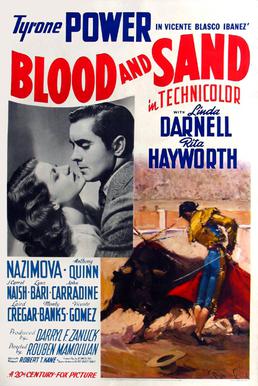




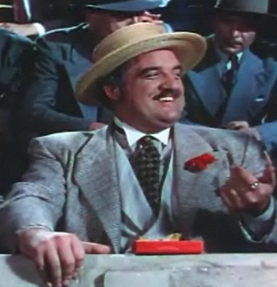


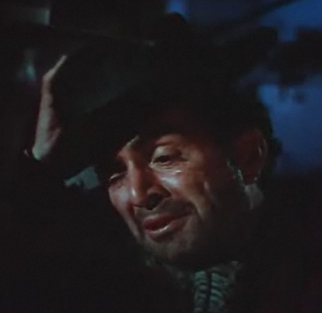
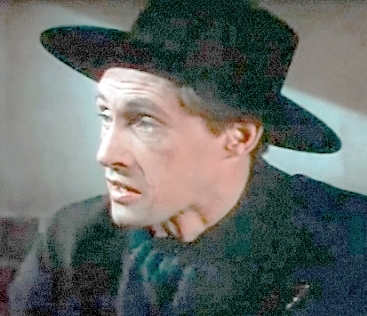




























































Comments